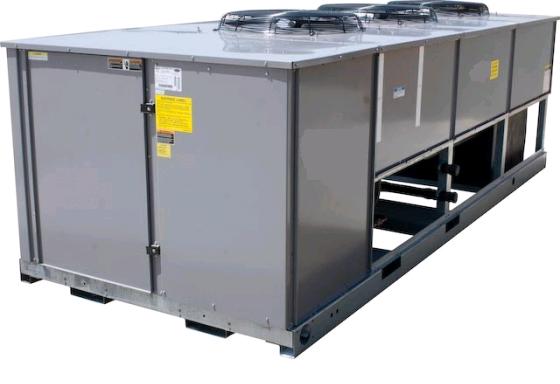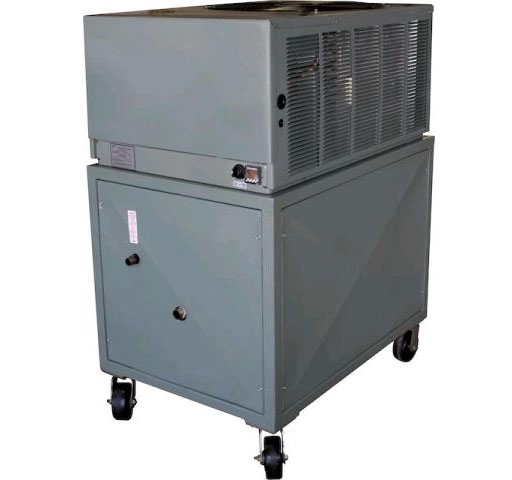Water Cooled or Air Cooled?
Air Cooled:
Air cooled chillers absorb heat from process water, and the heat is then transferred to the air around the chiller unit. This type of chiller system is generally used in applications where the additional heat it discharges is not a factor. In fact, it’s often practical to use the excess heat to warm a plant during the winter, thus providing additional cost savings. They require less maintenance than water-cooled units, and they eliminate the need for a cooling tower and condenser water pump. However, since a wet surface will transfer heat better than a dry surface, an air-cooled chiller will tend to consume approximately 10% more power than a water-cooled unit.
Water Cooled:
Water cooled chillers absorb heat from process water and transfer it to a separate water source such as a cooling tower, river, pond, etc. Industrial water chillers are generally used for large capacity applications, where the heat generated by an air cooled water chiller creates a problem. They are also considered when a cooling tower is already in place, or where the customer requires optimum efficiency of power consumption. Water cooled chillers require condenser water treatment to eliminate mineral buildup. Mineral deposits create poor heat transfer situations, that reduce the efficiency of the unit.
Portable or Stationary?
Portable:
The term “portable air cooled chiller” refers to the basic configuration of the system, not to its mobility. Most portable chiller units will never be moved once installed. The term refers to any chiller system that contains all of the necessary components – the refrigeration circuit, the reservoir, and the pump or pumps – within a single footprint. The controls of a portable air cooled chiller unit are integrated to include all motor starters, and require a single point electrical connection. The standard product offering includes portable chillers ranging from 2 to 100 tons in capacity.
Stationary:
The term “stationary water chiller” refers to any chiller that does not include a pump or a tank. The main component is a stand-alone chiller unit that must be connected by piping to a pump and a separate reservoir in order to function. This system will typically have separate controls for the chiller and the pump or pumps, with an electrical connection for each component. The controls should ideally be wired together, to prevent the chiller from cooling until the circulating pump is operating. The standard product offering for stationary chillers includes sizes ranging from 2 tons to more than 250 tons.
Standard Flow or Reverse Flow?
A “standard flow” chiller system has an integrated tank. It’s used in a closed loop cooling application where all of the water pumped from the chiller returns to the main unit under the pressure generated by the pump.
A “reverse flow” portable chiller does not include a tank. It’s a component in an open loop cooling application where an external tank or trough is used. The water in this tank or trough is gravity fed into the chiller pump, through the chiller and filter, and back to the process or to the tank or trough
Will this be a Central Unit?
The term “central water chiller” refers to any system that can cool several processes throughout a plant at the same time. A central water cooled chiller can be stationary or portable. It requires a pump or pumps to distribute the water to the processes. Our standard product offering includes central water chillers ranging from two to 250 tons in capacity.

